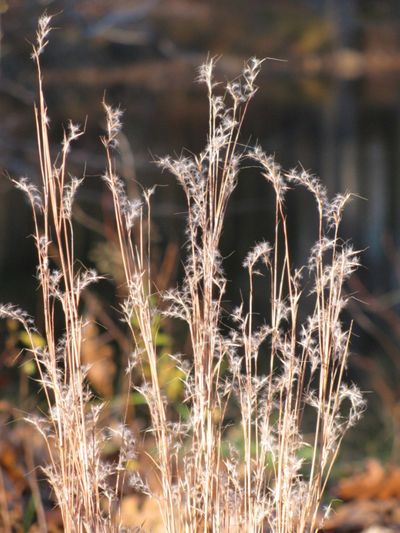Little Bluestem Information
Schizachyrium scoparium is the botanical name for little bluestem plant. It is a perennial warm-season grass with pretty bluish green color followed by rust colored fall foliage and fluffy white seed heads. Growing little bluestem grass in the landscape as an ornamental foliage plant provides a dimensional and architectural foil for broad leaved and flowering plants. As an added bonus, songbirds and gamebirds enjoy the seeds and it provides cover for foraging wildlife. This 3 foot (1 m.) tall bunchgrass grows a foot (31 cm.) in diameter. Its color deepens to rusty mahogany in fall and the clumps persist through much of the winter unless crushed by snow. It prefers warm regions where there are rocky outcrops or dry gritty soil but is also found as transition material between cultivated land and forest. The leaves are flat with slightly hairy bases and tend to roll up at maturity. It is a forage grass in native regions for wild grazers and other animals. Seeds and plugs make growing little bluestem grass in the landscape easy, and they are available where wild plants are sold.
Considerations when growing little bluestem grass
The grass’s fluffy seed heads are an added attraction to this colorful plant but they freely disperse in wind and, when disrupted, send floating seeds to all corners of the garden. The seeds establish easily after spring rains wash them into the soil, which means the unwary gardener may find little bluestem in lawns and other areas where it is not wanted. The only way to prevent this is to cut off the seed heads before they mature, but this reduces some of the visual appeal. The plants also grow side shoots which can be divided from the parent and transplanted. In container situations, this means you will need to divide the plant annually to prevent overcrowding and the take-over of the container.
Little Bluestem Care
There are no serious pest or disease threats to little bluestem plants. Sow the seed in spring or plant plugs for quicker establishment. It needs no nitrogen application the first year, but in subsequent years will benefit from a high nitrogen fertilizer application in spring. The plant needs supplemental water in early establishment stages, but thereafter is quite self-sufficient except in severe drought. It tends to go dormant without moisture, so the best appearance is preserved with weekly watering, especially those plants in containers. Bluestem grass is a remarkably adaptable and attractive addition to the home landscape as long as you are aware of its invasive potential.
